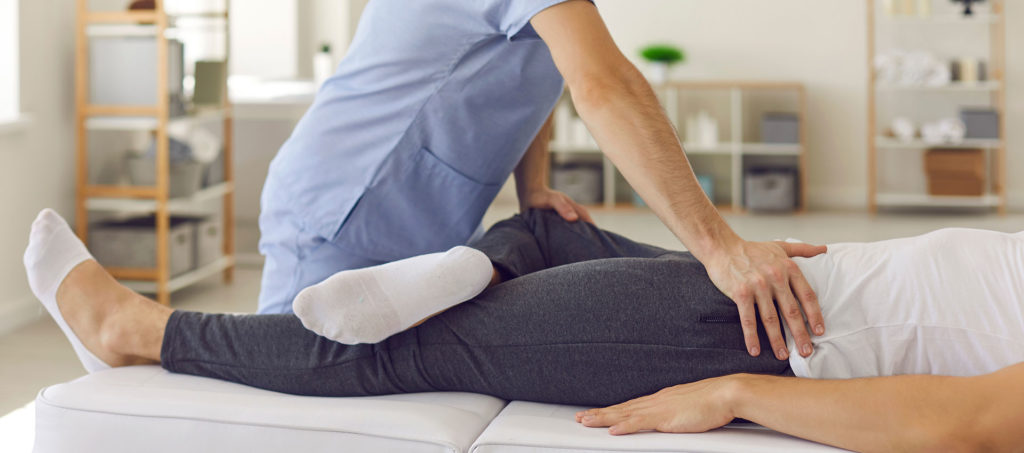Get life-changing treatments for urinary incontinence at JOGO Clinic, Chennai.
Overactive bladder, also known as OAB, creates a sudden and intense urge to urinate. Patients who wake up more than twice or thrice in the night to urinate will face overactive bladder issues. In a few people, this condition will cause an involuntary urine loss called urge incontinence. OAB is painful in certain circumstances and affects the quality of life, leading to emotional agony. However, effective treatments resolve the condition and manage its symptoms. Pelvic floor urinary incontinence therapy is one of the treatment options, which is a form of physical therapy with good results. It treats urge incontinence by coordinating the urinary bladder and pelvic floor muscles through Kegel exercises.
Pelvic floor urinary incontinence therapy is a type of physical therapy that will help regulate the disposal of faeces and urine from the system. It helps in controlling the frequent urinating urges. Hospitals in big cities like Chennai appoint highly trained therapists to guide patients through the physical therapy sessions. These therapists assess the pelvic floor of the patient as a primary step. They then provide a set of exercises based on individual requirements. The pelvic floor exercises are:
Biofeedback is a technique to identify the pelvic floor muscles. The therapist will use special sensors to record the electronic activity of the pelvic floor. With the help of a monitor, they check when the right muscle gets tightened. Pelvic floor urinary incontinence therapy may include behavioural strategies that help control the frequent, sudden and involuntary urge to urinate. A few effective behavioural strategies are:

The ligaments and muscles supporting the rectum, bladder, prostate and uterus are together called the pelvic floor. These muscles get attached to the pelvic bone and surround the rectum. They are known for controlling the bowel and bladder function to hold the faeces and urine until the person is ready to dispose of them. The bladder muscles become weak with time because of various factors like overweight, hormonal changes, age, constipation, childbirth, prostate cancer treatments, etc. When the pelvic floor muscles grow weak, an individual will face problems like urine leakages and urgency. The pelvic floor urinary incontinence therapy helps treat the OAB symptoms by strengthening the pelvic floor muscles. Another theory states that pelvic floor muscle contraction will consciously improve bladder control by activating the brain cells for voluntary urinary reflex.
We all know that pelvic floor muscles training is the first line of treatment and the best behavioural therapy for treating OAB. But when medications are combined with behavioural therapies they work better. If a patient wants to control the symptoms completely, there are other procedures to be clubbed with the pelvic floor urinary incontinence therapy. They are:
Anticholinergic Drugs
These are medications which block a particular chemical in the human system from sending messages to the bladder for contraction. It works effectively when paired with pelvic floor urinary incontinence therapy. Some of the popular anticholinergic drugs are Tolterodine, Fesoterodine and Trospium.
Mirabegron
Mirabegron is a beta-3 adrenergic drug which relaxes the muscles in the bladder walls to hold more quantities of urine. It offers the best result when combined with pelvic floor urinary incontinence therapy.
OnabotulinumtoxinA
When OnabotulinumtoxinA is consumed in small doses along with the pelvic floor urinary incontinence therapy, it works on the muscles of the bladder by temporarily weakening or paralyzing them to prevent any frequent contraction.
Sacral Nerve Stimulation
Sacral nerve stimulation is a procedure which doctors perform to regulate the nerve signals that provide impulses to the urinary bladder. It consists of a device like a pacemaker that doctors implant on the lower back of the body, sending electric signals to sacral nerves. This procedure provides good outcomes when the patient follows pelvic floor urinary incontinence therapy simultaneously.
Also Read: Nocturia or Overactive Bladder Incontinence at Night- An Overview
Surgery
In cases of severe OAB, and when the body does not respond to pelvic floor urinary incontinence therapy or any other treatment, surgery will be the best method to treat an overactive bladder. The surgeries offered in big cities like Chennai to treat OAB are:
Studies state that pelvic floor urinary incontinence therapy will effectively treat OAB by improving the quality of life and easing pelvic pain. There is evidence that the pelvic floor muscle training program improves the OAB symptoms in women and reduces nocturia, and urine leakages. In 2016, researchers found that several AOB complaints decreased by pairing the biofeedback technique and pelvic floor muscle training. A meta-analysis study found that the pelvic muscle training exercises reduced urinary urgency and frequency. Thus, pelvic floor physical therapy can effectively treat any patient with OAB.
If you want to ensure that you perform your pelvic floor exercises properly, get guidance from a professional physical therapist in Chennai. Pelvic floor urinary incontinence therapy works best on people with moderate urine leakage issues. But if the symptoms are severe, medications along with exercises will help ease the condition. Physical therapy is not an overnight solution. It will take several months to see changes, and the success of the treatment varies from person to person.
The Bottom-line
Pelvic floor urinary incontinence therapy helps an individual gain good control over the bladder thereby reducing the incontinence symptoms. But if you want to combine the exercises with other treatments, reach out to JOGO clinic, one of the best clinics in Chennai, offering an incredible digital therapeutics solution for incontinence.
Get life-changing treatments for urinary incontinence at JOGO Clinic, Chennai.
1/1,11th Cross st., Shastri Nagar, Adyar, Chennai, Tamil Nadu 600020.